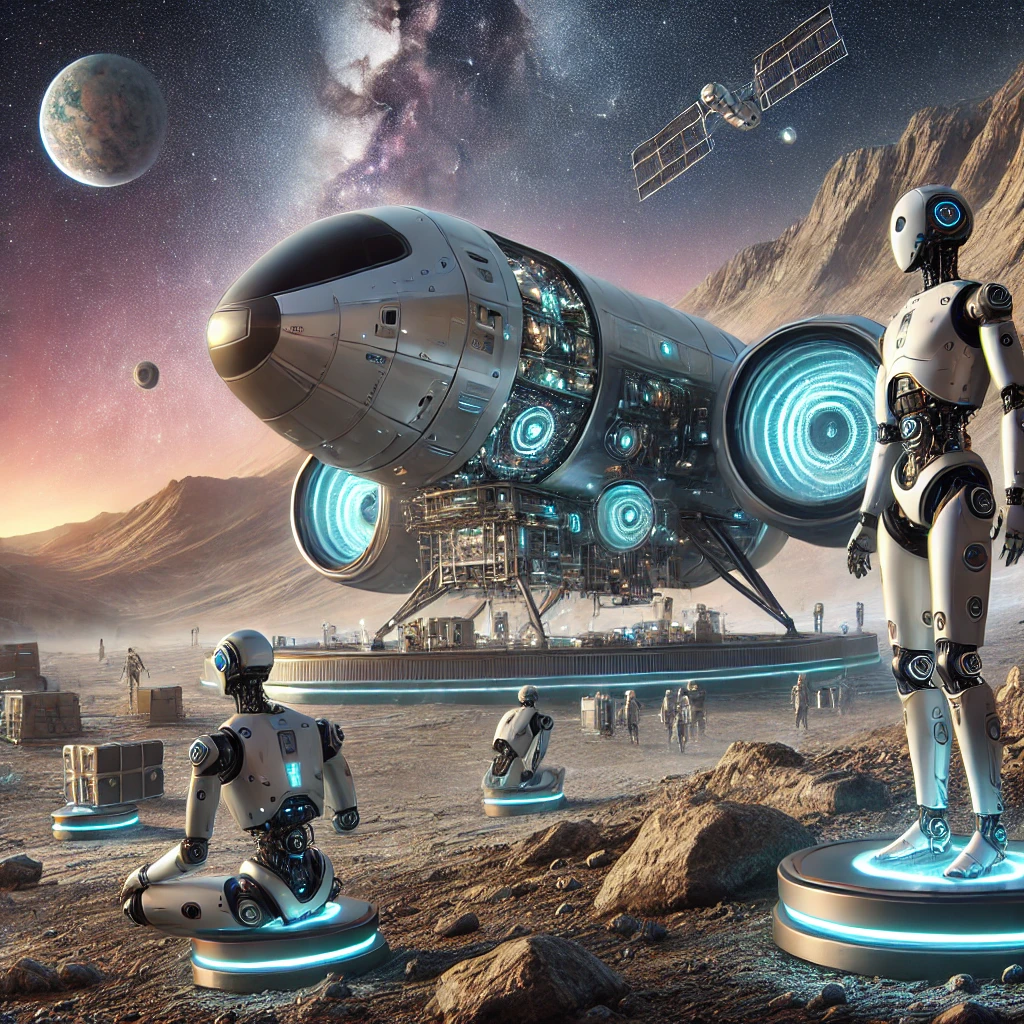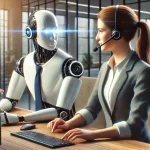Space exploration has always been at the forefront of technological innovation. From landing on the moon to exploring distant planets, humanity’s quest to understand the cosmos continues to push the boundaries of science and engineering. Today, artificial intelligence (AI) is revolutionizing the way we explore space. With its advanced data processing capabilities and predictive algorithms, AI is enhancing mission planning, automating data analysis, and supporting astronauts in unprecedented ways.
One of the most significant advancements in AI is the development of language models like GPT (Generative Pre-trained Transformer), which can process and analyze massive amounts of data. NASA, SpaceX, and other space agencies are leveraging these capabilities to improve mission efficiency, predict anomalies, and enhance human-machine collaboration in space missions. This article explores the pivotal role AI plays in space exploration, from data analysis and mission planning to astronaut support and beyond.
AI in Data Analysis: Unraveling the Mysteries of the Universe
Space missions generate enormous amounts of data, ranging from satellite imagery and planetary scans to cosmic radiation measurements and telemetry data from spacecraft. Analyzing this data manually is time-consuming and prone to human error. AI, particularly GPT models, is transforming the way scientists process and interpret complex datasets.
1. Analyzing Planetary Data and Identifying Exoplanets
One of the most remarkable applications of AI in space exploration is in the analysis of planetary data. NASA’s Kepler and TESS missions have generated vast datasets containing light curves from distant stars. AI models can analyze these light curves to detect subtle dips in brightness, indicating the presence of exoplanets. By using machine learning algorithms, scientists can automate the identification of exoplanets and even predict their potential habitability.
GPT models also assist in analyzing spectral data to determine the chemical composition of planetary atmospheres. This helps scientists search for biosignatures or signs of life on other planets.
2. Processing Satellite Imagery and Space Telescope Data
Satellites and space telescopes capture high-resolution images of celestial objects, including galaxies, nebulae, and black holes. These images contain valuable scientific information, but analyzing them requires advanced pattern recognition capabilities. AI models trained on astronomical datasets can automatically detect and classify objects, reducing the need for manual annotation.
NASA’s Hubble Space Telescope and the James Webb Space Telescope (JWST) generate enormous volumes of visual data. AI-powered image processing techniques help astronomers enhance image resolution, reduce noise, and identify cosmic phenomena like supernovae and gravitational lensing events.
3. Predictive Modeling and Space Weather Forecasting
Space weather, such as solar flares and cosmic radiation, poses significant risks to space missions and astronaut safety. AI models are being used to predict space weather events by analyzing data from solar observatories and magnetometers. By forecasting solar storms and cosmic ray activity, AI helps mission planners make informed decisions to protect spacecraft and crew.
Mission Planning and Navigation: Enhancing Efficiency and Accuracy
AI plays a crucial role in mission planning, trajectory optimization, and autonomous navigation. With the increasing complexity of interplanetary missions, AI-driven tools are becoming indispensable for calculating optimal flight paths, minimizing fuel consumption, and ensuring precise landings.
1. Trajectory Optimization and Autonomous Navigation
Interplanetary missions require precise calculations of orbital trajectories and fuel-efficient flight paths. AI algorithms use reinforcement learning to simulate and optimize spacecraft trajectories, considering gravitational forces, fuel constraints, and mission objectives. This approach was used in the Mars Perseverance rover landing, where AI helped calculate the optimal descent path.
Autonomous navigation is another critical application of AI in space exploration. Spacecraft like the European Space Agency’s Rosetta and NASA’s OSIRIS-REx rely on AI-powered navigation systems to autonomously approach and orbit asteroids and comets. These systems use computer vision and machine learning to identify landmarks and adjust flight paths in real-time.
2. AI in Rover Exploration and Terrain Mapping
Mars rovers like Curiosity, Perseverance, and the upcoming ExoMars mission utilize AI to navigate challenging terrains. AI models process images captured by onboard cameras to detect obstacles, assess terrain roughness, and select the safest driving paths. This autonomous capability allows rovers to travel greater distances with minimal human intervention.
Additionally, AI is used for 3D terrain mapping, creating detailed topographical maps of planetary surfaces. This aids in selecting landing sites, planning exploration routes, and identifying scientifically interesting regions for sampling.
Supporting Astronauts: AI as a Space Companion
Human space exploration requires advanced support systems to ensure astronaut safety, productivity, and well-being. AI-powered virtual assistants and monitoring systems are enhancing human-machine interaction aboard spacecraft and space stations.
1. AI-Driven Virtual Assistants
NASA is experimenting with AI-driven virtual assistants like CIMON (Crew Interactive MObile CompanioN) on the International Space Station (ISS). CIMON uses a conversational AI model similar to GPT to interact with astronauts, provide task reminders, and offer technical guidance. This voice-activated assistant reduces the cognitive load on astronauts, allowing them to focus on critical tasks.
In future long-duration missions to Mars, AI companions will play an essential role in providing psychological support, maintaining crew morale, and facilitating communication with mission control on Earth.
2. Health Monitoring and Predictive Diagnostics
Space travel poses unique health challenges, including radiation exposure, muscle atrophy, and psychological stress. AI-powered health monitoring systems analyze biometric data from wearable sensors to track astronauts’ vital signs, sleep patterns, and overall health. Predictive diagnostics powered by machine learning can detect potential health issues before they become critical, ensuring timely medical intervention.
The Future of AI in Space Exploration: Beyond NASA
AI is not limited to NASA’s missions; private space companies like SpaceX, Blue Origin, and Rocket Lab are leveraging AI to optimize rocket launches, enhance spacecraft design, and develop autonomous landing systems. SpaceX’s Falcon rockets utilize AI algorithms for precise landings on drone ships, revolutionizing reusable rocket technology.
Looking forward, AI will play a pivotal role in human missions to Mars, asteroid mining, and space tourism. Autonomous AI systems will manage space habitats, assist in resource extraction, and ensure safety in hostile extraterrestrial environments.
Conclusion
AI is transforming space exploration, enabling us to explore distant worlds, analyze cosmic phenomena, and enhance human-machine collaboration in space. From processing vast datasets and optimizing mission trajectories to supporting astronauts’ well-being, AI-driven tools are revolutionizing every aspect of space missions. As AI technology continues to advance, its integration into space exploration will lead to groundbreaking discoveries and pave the way for humanity’s journey beyond Earth.
The future of space exploration depends on the harmonious collaboration between human ingenuity and AI’s computational power. As NASA, SpaceX, and international space agencies continue to push the boundaries of science and technology, AI will remain at the forefront of our quest to understand the cosmos.



Elon Musk, take a note!
Musk now using LLMs in his progects!👍
its musk he makin all dis happen 😂 😂
I didn’t realize even Mask is using GPT xD
ai in space? sounds cool but also kinda sus . “groundbreaking discoveries” 🤔 believe it when i see.
tbh aint nobody finna use AI in space tho.. 😂
ai in space? sounds risky what if it goes wrong?! who will be liable 🤔🤔🤔
real sci-fi… like fr this stuff wild
huh gpts is now nasas bff for space missions
omg ai in space is next level😁😁